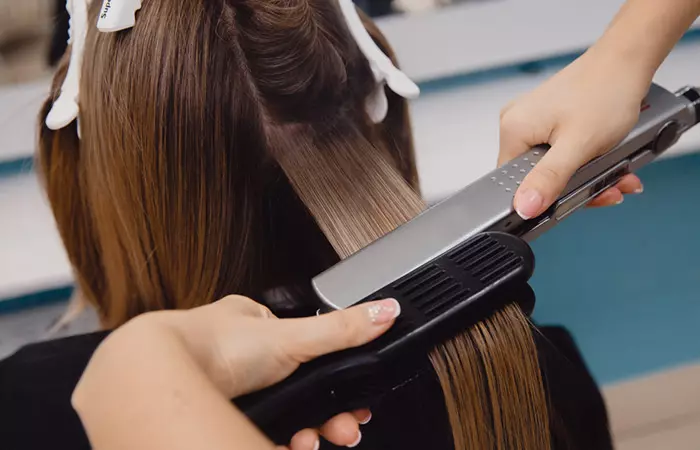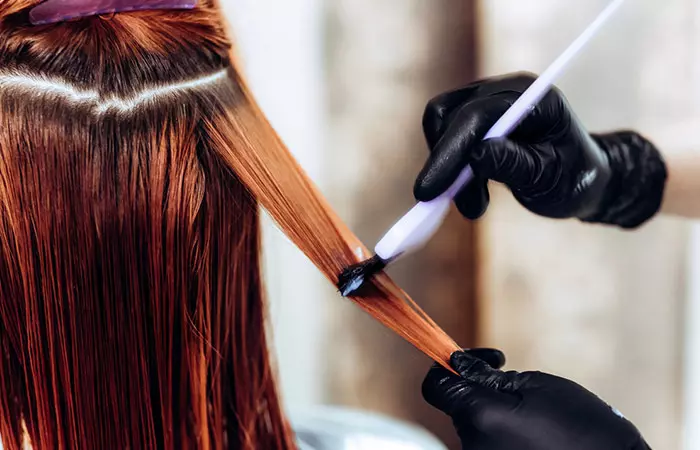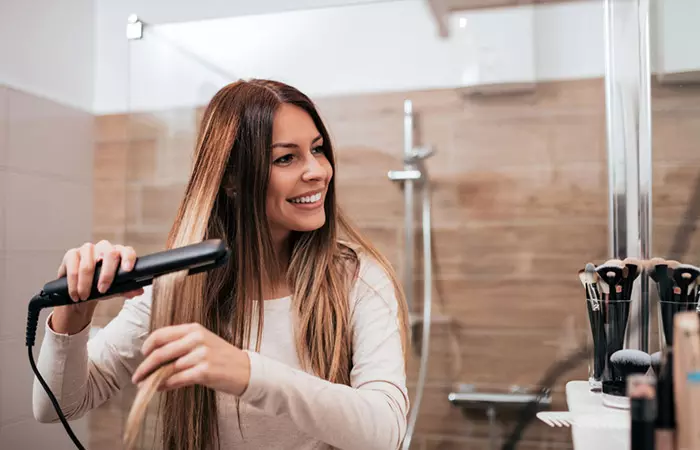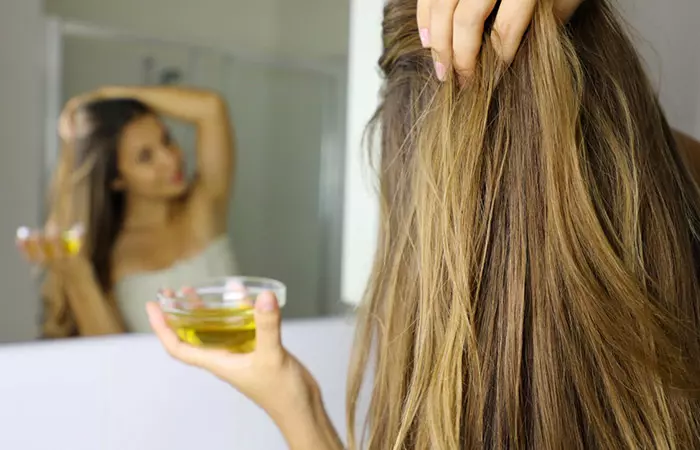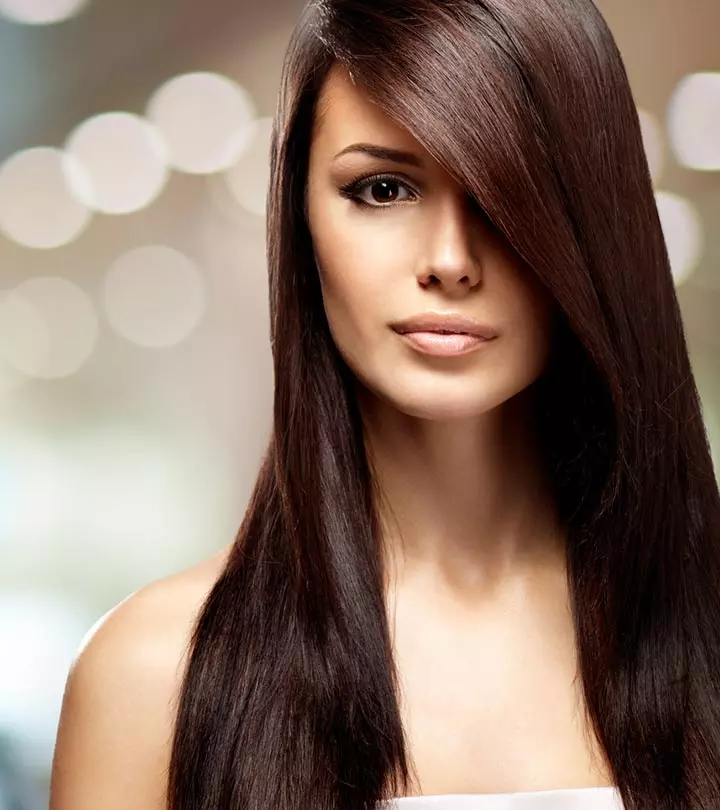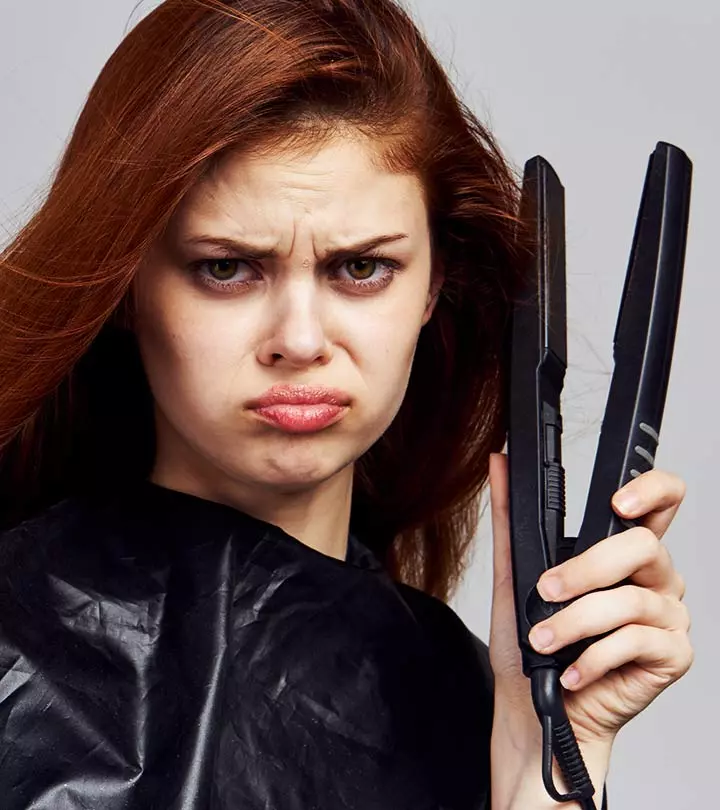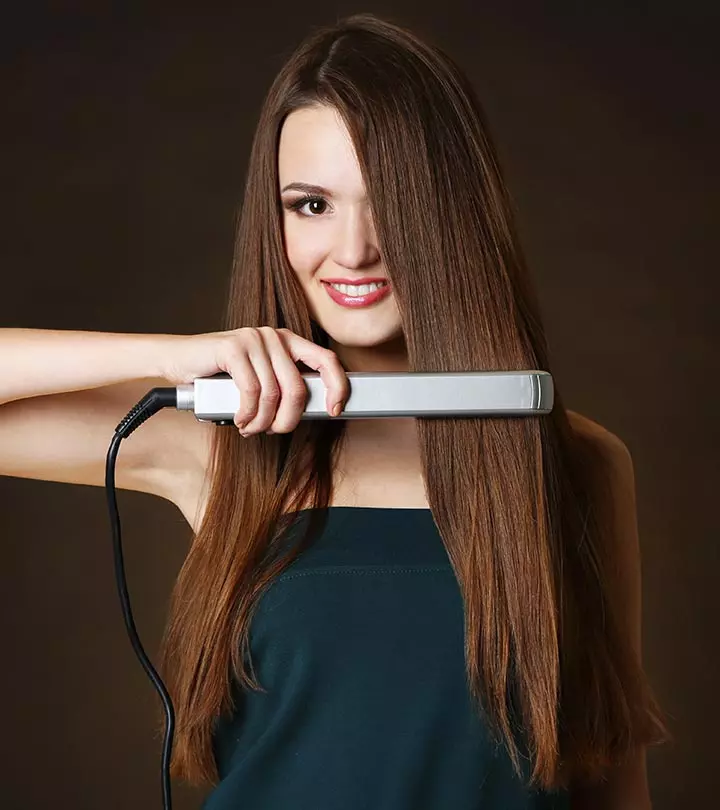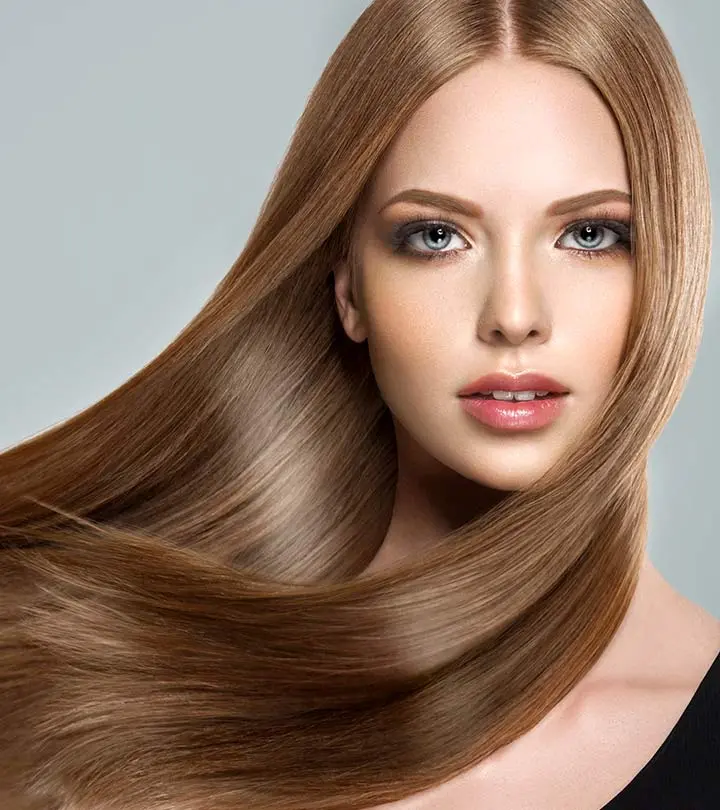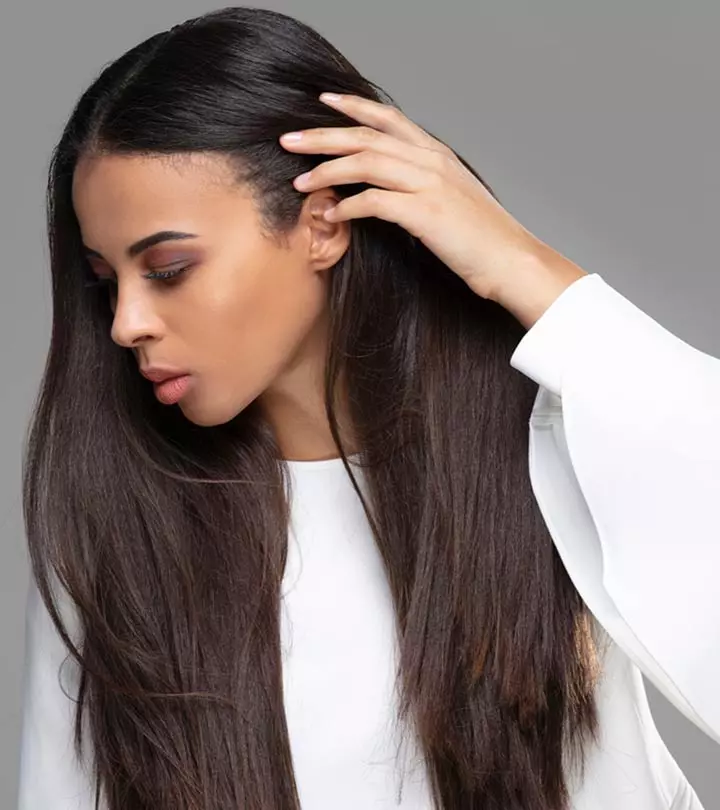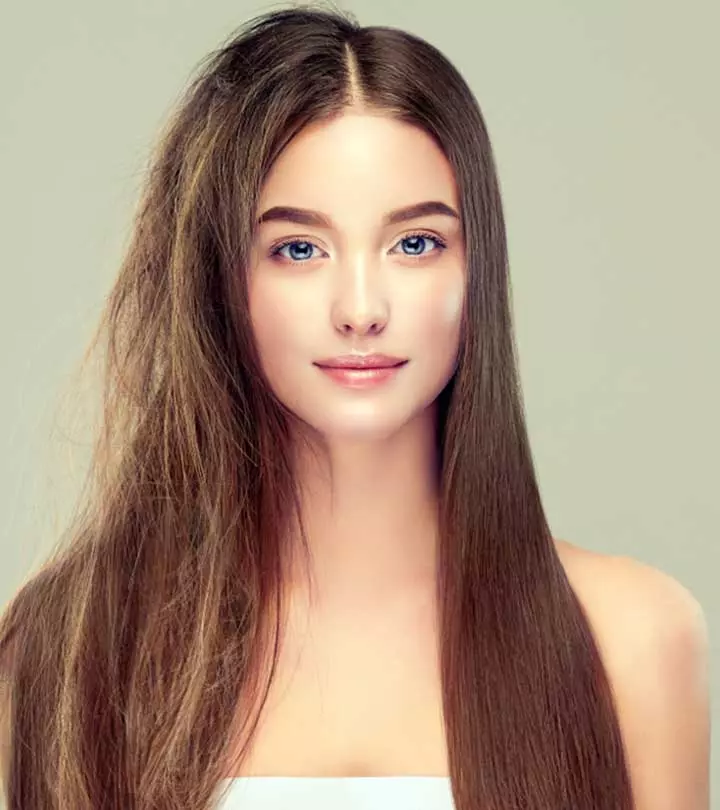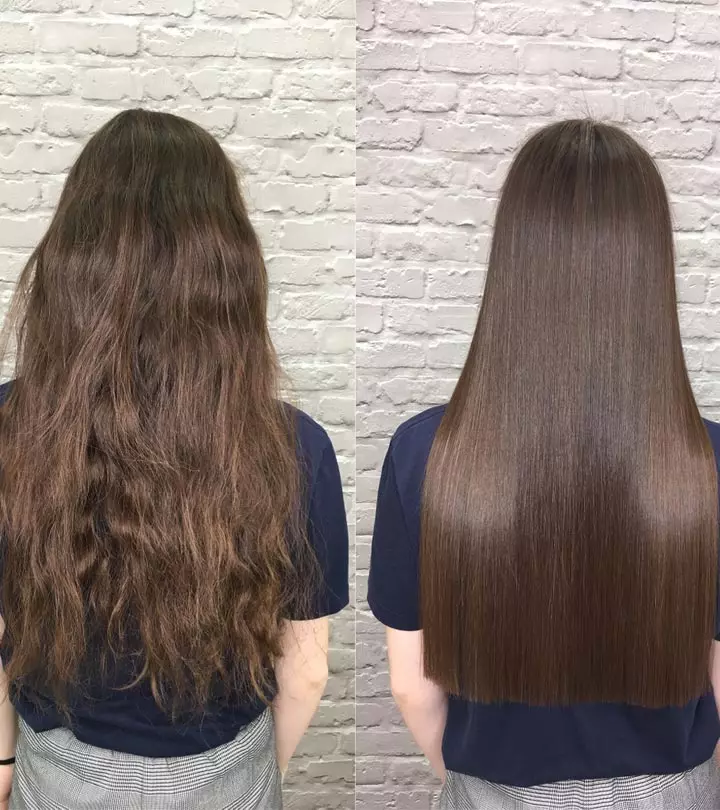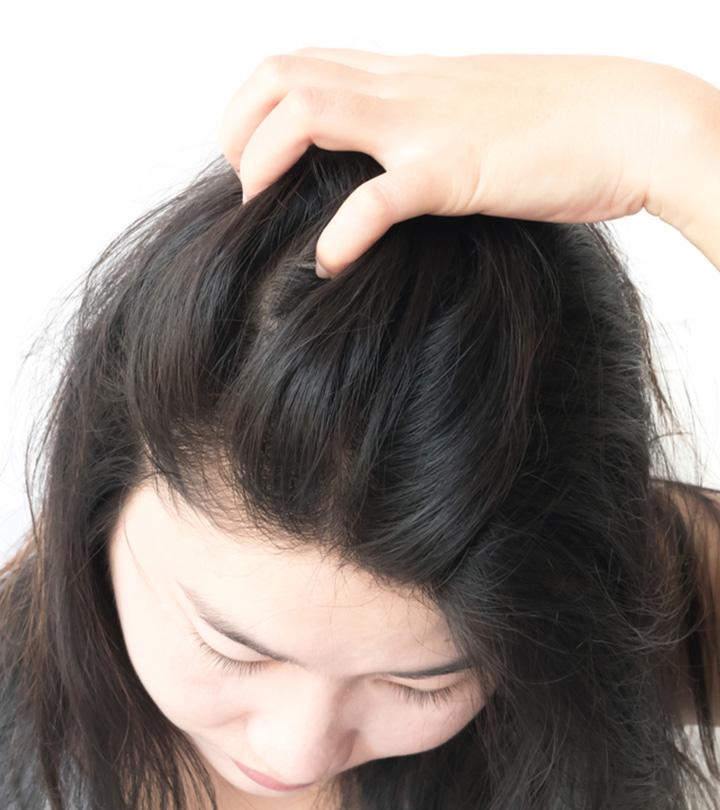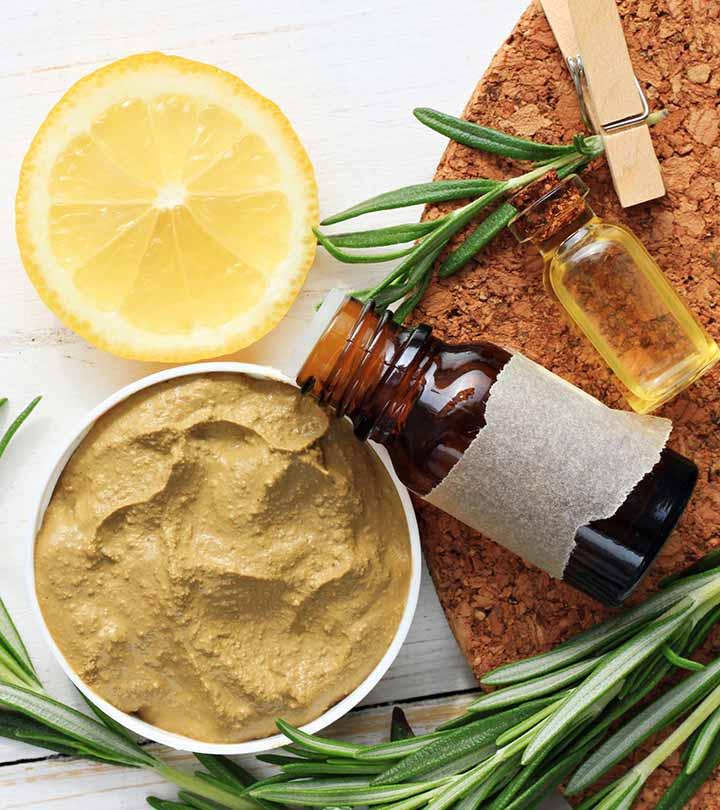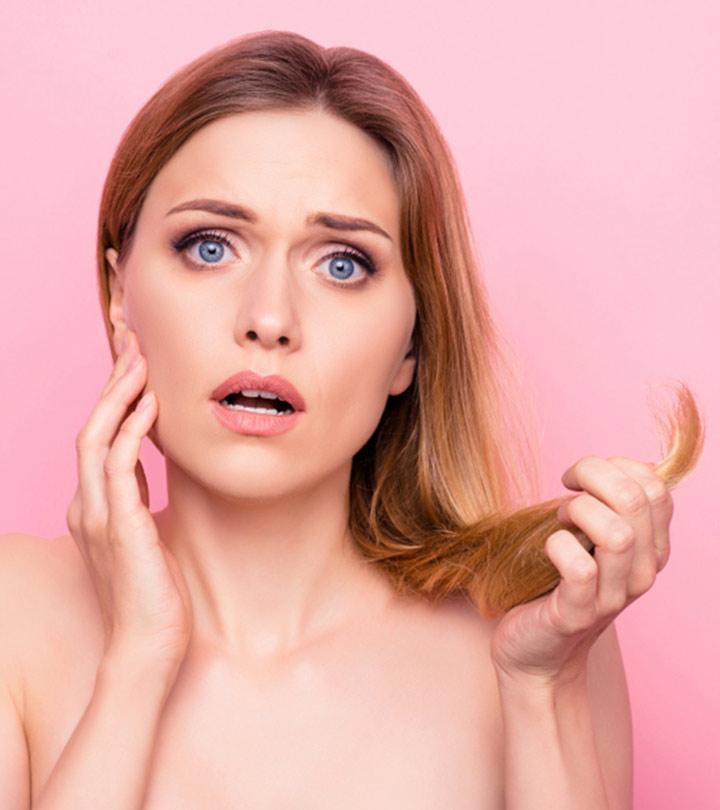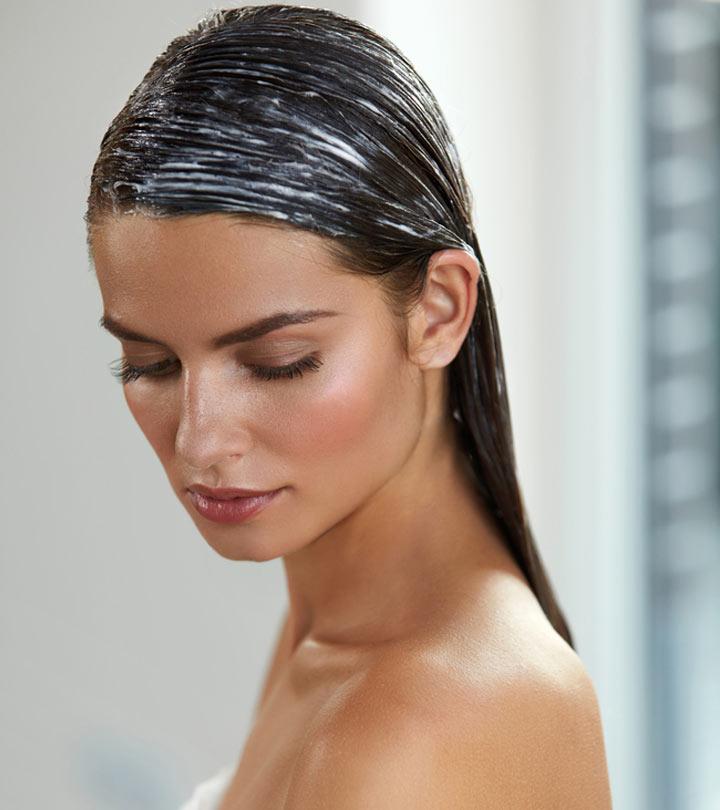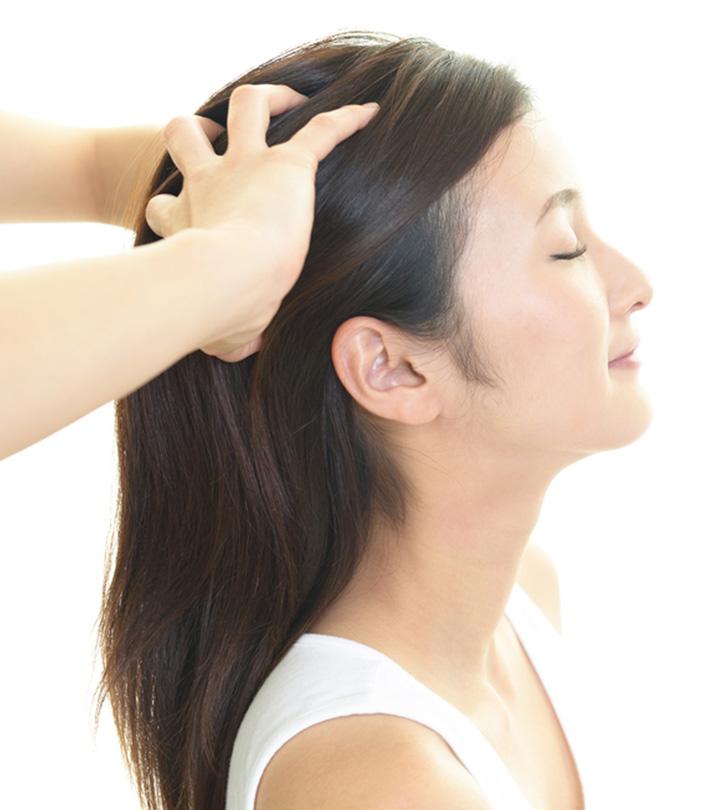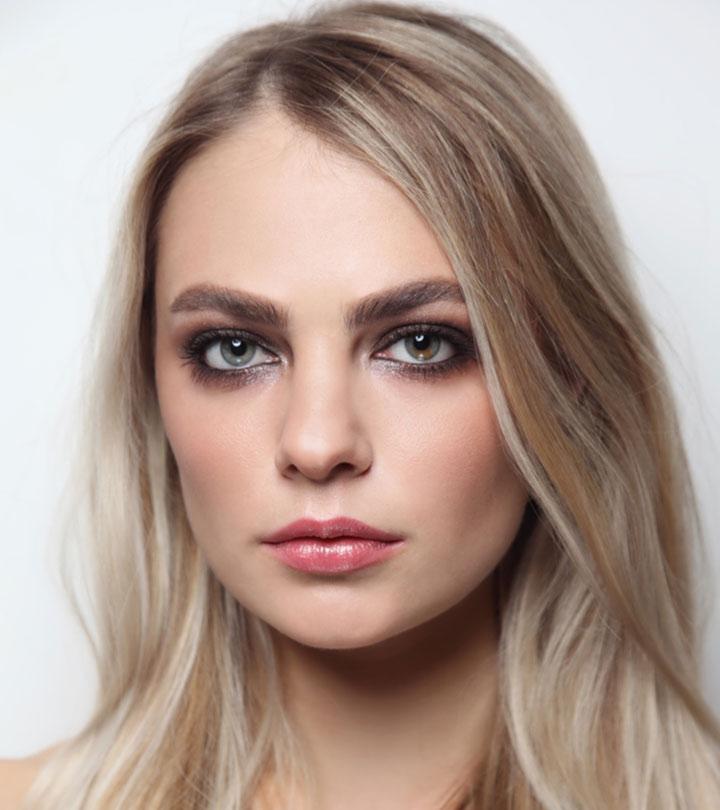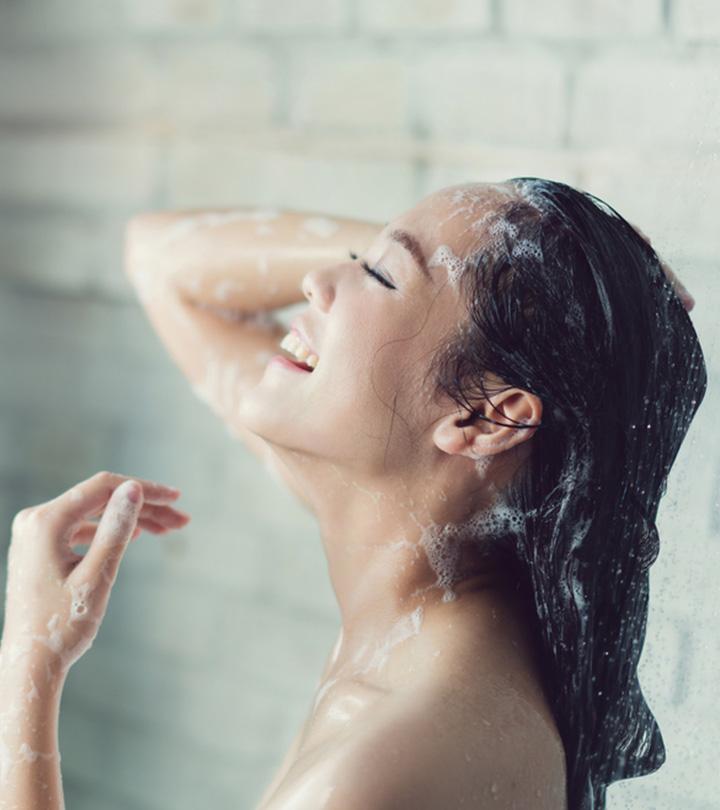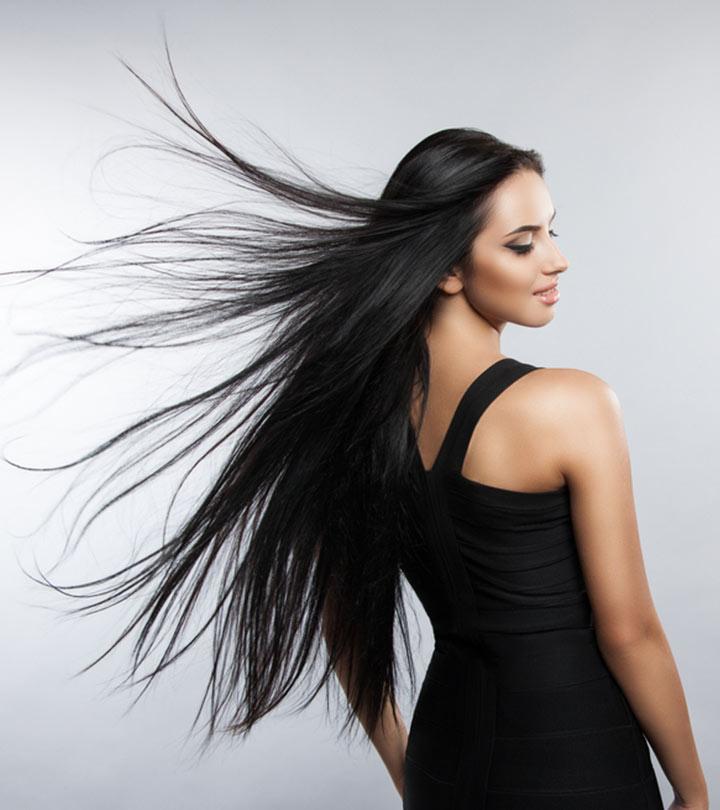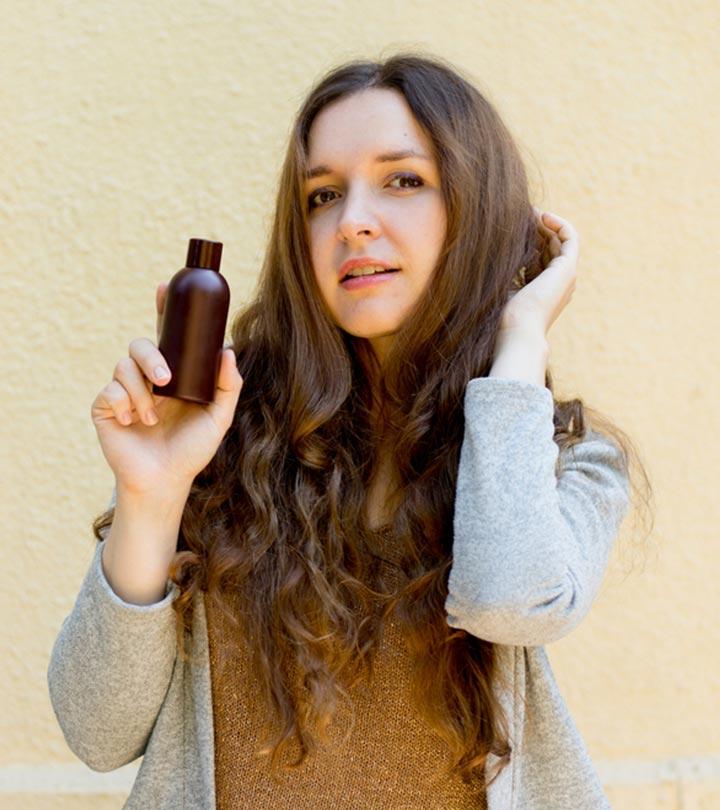5 Hair Straightening Treatments – Which One Is Best For You?
Learn all about different heat styling techniques in detail before spending the bucks!

Image: ShutterStock
Busy or lazy, one of the ways to keep your hair looking sleek 24/7 is straightening your hair. Frizzy hair, flyaways, tangles, dull hair, and hours of styling – hair straightening takes care of it all like a fairy godmother! And, thanks to modern advancements in hair technology, there are now five popular hair straightening treatments that you can try out. But, what’s the price you pay – figuratively and literally? Which one is the safest? How long does your hair remain straight? Here’s everything you need to know about various hair straightening treatments for silky straight hair. Read on to find out all about them!
In This Article
5 Hair Straightening Treatments
1. Hair Rebonding
Your hair is made of proteins bound by disulfide bonds. This gives the hair its structure – straight, wavy, curly, coily, etc. Hair rebonding breaks these bonds to relax the hair. Then, a neutralizer is applied to rebond the natural structure to make it straight and silky. This treatment takes about 3 hours, depending on your hair texture, thickness, density, and length.
Cost: $200-$600
Results Last: Up to 6 months
Safety: Hair rebonding can weaken your hair. It is not suitable for people with thinning hair.
Naznin Azeez, a blogger, shares her rough experience with hair rebonding on her blog. She writes, “All was well until my hair started falling like crazy. Today, 4 years later, my hair is still under the category of ‘Damaged’. The new hair that grows seems to be wavier than my original hair, which is pretty sad. Now when I braid my entire hair, I have one ‘tail like’ braid while before I could have 2 braids with double the current one’s volume (i).”
2. Keratin Treatment (Brazilian Straightening)
Your hair is made of keratin protein. But with age and due to poor nutrition, the keratin protein content decreases, resulting in dry and dull hair. Keratin treatment, also known as Brazilian straightening or Brazilian hair blowout, adds a coat of keratin to your hair, thereby replenishing its nutrients and leaving it soft, smooth, frizz-free, and straight. Keratin treatment can take about 1-4 hours, depending on your hair length and texture. Dr. Emmanuel R Loucas, MD, Assistant Clinical Professor of Dermatology at Mount Sinai School of Medicine, adds, “Keratin treatments are often used to straighten hair. They work by smoothing out overlapping cells. Keratin also works as a “spackling agent”, in the sense of it filling in gaps where breakage occurs. The treatments last anywhere between 2-6 months, depending on the quality of the products and whether they are done professionally or at home.”
Cost: $200 – $500
Results Last: 2-8 months
Safety: It is a relatively safe hair straightening treatment. However, avoid frequent keratin treatments as it contains hair straightening products like formaldehyde, which can cause hair breakage and damage if proper care is not taken post keratin treatment.
 Did You Know?
Did You Know?3. Chemical Straightening (Hair Relaxing)
Chemical straightening (or hair relaxing treatment, as it is popularly known)refers to permanent hair straightening.
The process is quite tricky and should be done by a well-trained professional. It involves the application of a chemical that helps break the bonds that provide your hair its structure. However, if too many bonds are broken, there’s a risk that your hair may end up looking limp. And, if not the right number of bonds are broken, your hair might look somewhere between straight and wavy/curly.
When you are doing a relaxer, you have very limited time to apply and rinse off. Typically, you only leave a relaxer on for less than 10 minutes. If you leave a relaxer on for too long, you risk of over processing and melting your hair off. Hence, this service is recommended for thick curl/coiling hair.
Cost: $70 – $100
Results Last: Until you cut your hair
Safety: The formaldehyde in the chemical used in this straightening method is harmful and may cause hair breakage, weak hair, and hair fall. Unless you get an expensive treatment that does not contain harmful ingredients, you might end up causing some serious damage to your hair.
4. Japanese Hair Straightening
Japanese hair straightening or hair thermal reconditioning is also a permanent straightening treatment. It involves loosening the protein bonds and reshaping the hair structure. It takes 3-4 hours for this hair straightening treatment to complete. You might also need to visit the salon after a day or two for an hour or more for the final step.
Cost: $450 – $800
Results Last: Until you cut your hair
Safety: Japanese hair straightening can be quite damaging to the hair. If you do decide to go for it, make sure to use good products to maintain your hair and prevent hair fall. Also, avoid frequently opting for this straightening treatment.
Danielle, a blogger, shares her amazing experience with Japanese hair straightening on her blog: “I would definitely recommend this hair treatment if, like me, you struggled with curls that you cannot tame and spend too much time on straightening! This really changed my life, saving me from hours of straightening and tons of dollars on hair products, straighteners, and salon visits (ii).”
 Fun Fact
Fun Fact5. Hair Botox
Hair botox is a non-chemical deep conditioning treatment. This treatment makes your hair smoother, shinier, and healthy-looking. It is an effective way to straighten your hair and make it less fussy. The ingredients in this treatment contain vitamin E, vitamin B5, collagen complex, argan oil, coconut oil, glyoxylic acid, and amino acids that replenish damaged hair without the harmful effects of other hair straightening treatments.
Cost:$100 (or lesser)
Results Last: 2-4 months
Safety: Hair botox is the safest deep treatment. It does not contain formaldehyde, a potent carcinogen, and other harsh chemicals that weaken the hair.
Some other hair straightening treatments you can try include hair lamination and the hair silk press.
These are the popular hair straightening treatment options available right now. But, which one should you choose? Safest or cheapest? Let’s dig a little deeper in the following section.
Which Straightening Treatment Should You Choose?
To decide which straightening treatment should you choose, you should consider the following:
- Your Hair Type: Do you have wavy, curly, or coily hair? Is your hair damaged? Is your hair thinning and prone to breakage? Stay away from chemical straightening and Japanese straightening if your hair is thinning, fine, and/or prone to breakage.
- Chemical Ingredients: Chemicals are not good for your hair. But, certain ingredients like formaldehyde should be avoided at all costs. If you decide to opt for permanent hair straightening, make sure you do not get it done frequently or opt for the one that does not contain formaldehyde.
- Your Budget: Hair straightening is costly. But, going cheap may put the health of your hair at risk. We recommend you save up if you want to opt for a straightening treatment that’s a little above your budget but is probably the best for your hair.
A few of you might also be tempted to straighten your hair at home. Should you? Scroll down to know more.
Can You Straighten Your Hair At Home?
Yes, you can straighten your hair at home – with a flat iron. Do not try straightening your hair permanently with chemicals. The application of these chemicals depends on your hair type and texture, which an expert professional will be able to judge the best. Also, it can be dangerous if the chemicals come in contact with your skin. Thus hair ironing is a safer process that can be done at home.
Various hair products like hair hair straightening cream, hair straightening serum, hair straightening mask, and hair straightening spray can give you temporary straightened hair at home. You can also use a hair straightening brush, hair straightening comb or hair straightening iron with a heat protectant spray for similar results.
With that in mind, take a quick look at the dos and don’ts of hair straightening treatments.
In a survey conducted among 1,555 women, 89% of them used hair straighteners or chemical relaxers more than twice a year. The data showed that the usage increased from childhood to adolescence and again decreased in adulthood. So, hair straightening treatments have become very common and accessible for everyone.
Dos & Don’ts Of Hair Straightening Treatments
- Do not wash your hair for 2 days after straightening, depending on the straightening treatment. For the keratin and Japanese treatments, you have to wait for 72 hours before washing your hair.
- Do not tie your hair to avoid dents and crimping.
- Do not pull your hair behind your ears.
- Use argan oil to keep your hair shiny.
- Use a good-quality hair straightening shampoo and a hair straightening conditioner.
- Use a wide-toothed comb.
- Use a leave-in conditioner to keep your hair moisturized.
- Get a hair spa done once a month.
- Trim your hair once every 3 months.
- Eat plant or animal sources of protein.
- Consume green vegetables, drink water, and sleep well.
Side Effects Of Hair Straightening Treatments
Hair straightening treatments involve heat styling tools and chemical treatments that may cause several side effects. The severity of these side effects vary depending on the type of treatment undergone, the frequency of the treatment, and individual hair and scalp conditions.
- Frizz and Reversion: Temporary treatments allow the hair to revert to its natural texture over time, resulting in frizz.
- Hair Breakage: Chemical straightening treatments, especially when not applied properly or used too frequently, weaken the hair structure and lead to breakage and hair loss.
- Scalp Irritation: The chemical solution used in these treatments may irritate the scalp, causing redness, itching, or a burning sensation.
Formaldehyde Exposure: Some hair smoothing treatments contain formaldehyde or formaldehyde-releasing ingredients that pose health risks when inhaled.
While most people believe hair straightening treatments are safe, they may cause some side effects due to the chemicals and heat used. Learn more in the section below.
Infographic: Top 5 Hair Straightening Treatments
Numerous straightening techniques are available today to help transform frizzy or unruly hair into smoother, sleeker strands. But it all comes down to picking the ideal hair straightening solution for your specific needs and hair type.
Check out the infographic to learn all you need to know about different hair straightening treatments for smooth straight hair.
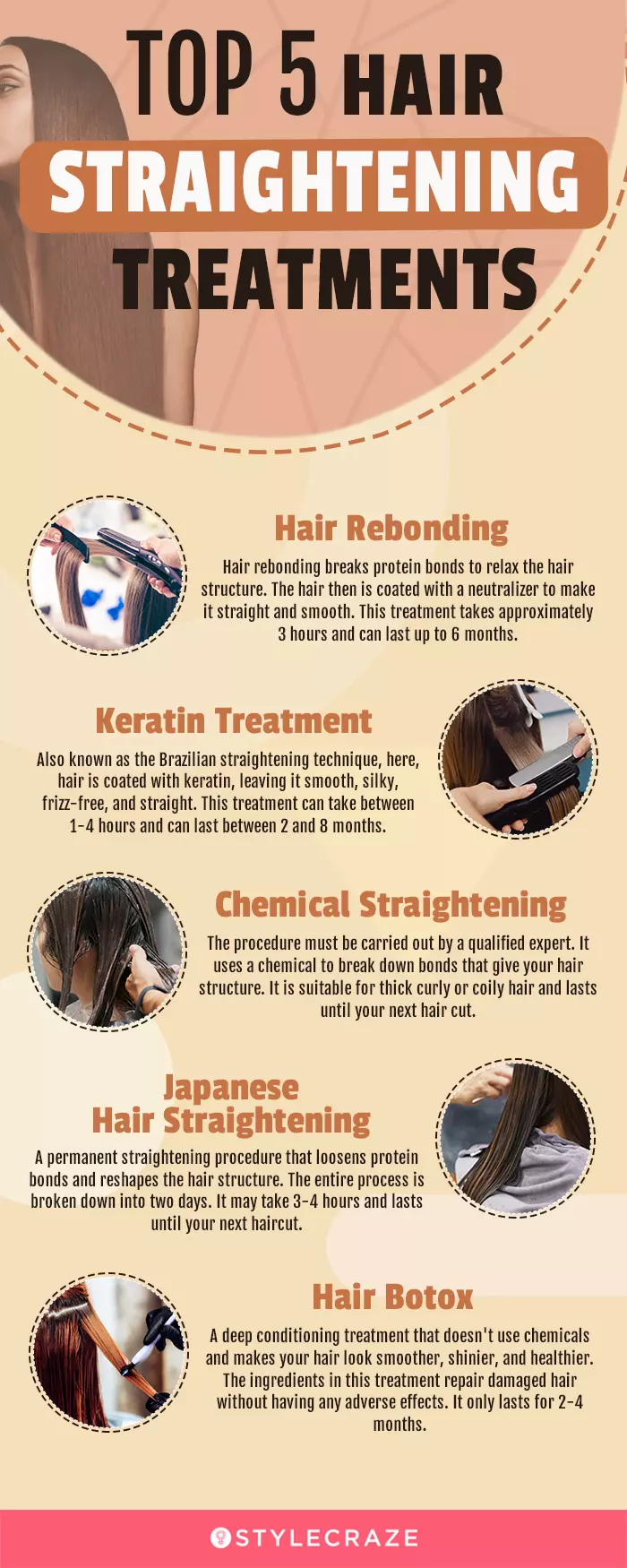
Illustration: StyleCraze Design Team
Conclusion
Now that you have a good idea about what each hair treatment is, its cost, how long its results last, and if it will cause hair damage, getting silky and smooth hair is just one decision away. Remember, your hair needs proper nutrition and care if you decide to straighten it permanently. So, if you do decide to straighten your hair, take good care of it, and your mane will look better than ever!
Frequently Asked Questions
What is the least damaging way to straighten hair?
Dr. Loucas says, “The most optimal way to straighten your hair to avoid damage is to do it without the use of heat. Use wide rollers and wrap hair tightly and then use hair straightening spray.”
What is the most damaging hair treatment?
According to Dr. Loucas, “The use of excessive heat causes the most damage to the hair while straightening it. It can result in burns to the hair and skin, as well as hair breakage and dryness issues.”
Why is my hair still frizzy after keratin treatment?
Liz L. Sowers, a professional hairstylist, says, “There are several reasons this could happen: the treatment could have been misapplied or expired, the hair could have been too damaged before the treatment (hair too porous), or the wrong product was used for your hair type (thicker coarse hair may require a different product or several treatments to achieve the desired look).”
Is permanent hair straightening good for hair?
No. Any kind of chemical treatment will alter the structure of the hair forever. Virgin hair is always the healthiest.
Is keratin or straightening better?
Keratin treatments are a healthier option as they may help repair damaged hair. Chemical straightening may worsen the structure of the hair.
Which lasts longer, straightening or smoothening?
Hair straightening gives a more defined effect and lasts longer with regular touch-ups. While hair smoothening might not result in your desired straightened look and wear off soon, it is less damaging to your hair. Using a flat iron is the only temporary hair straightening or hair smoothing solution.
Does hair fall after straightening?
Yes. Hair fall is the most common and noticeable sign of hair damage induced by straightening treatments.
Can I wash my straightened hair every day?
Yes. You may wash your hair with water every day, but it is not recommended unless you have oily hair or sweat a lot. Shampooing chemically straightened hair every day may wear off the treatment. Therefore, hair experts recommend shampooing your hair once every 2-3 days with a sulfate-free product.
Can I oil my hair after straightening?
Hair experts suggest avoiding oiling only for a week immediately after the treatment to let the chemicals work through your hair. After that, oil proves to be the best nourishing solution for chemically altered hair.
Key Takeaways
- The different types of hair straightening treatments are keratin treatments, chemical straightening, Japanese straightening, and thermal straightening.
- Though straightening treatments give long-lasting, smoother hair, they can damage your hair.
- Avoid washing your hair two days after your hair straightening treatment.
- Use argan oil and good quality shampoo and conditioner to keep your hair hydrated and healthy,
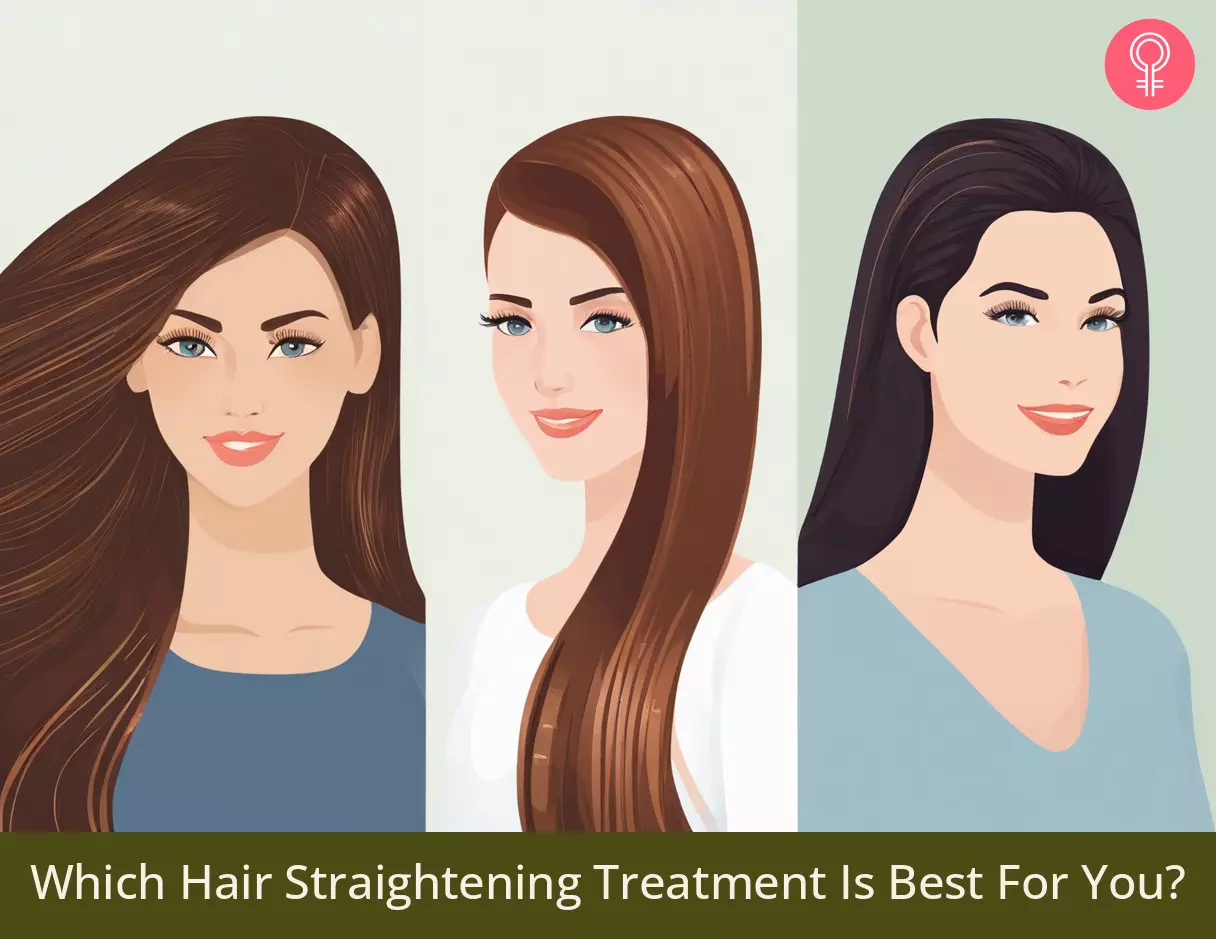
Image: Stable Diffusion/StyleCraze Design Team
Hair straightening, smoothening, keratin, and rebonding are all different from each other. Check out the video below to check out these differences, and decide which treatment is ideal for you!
Personal Experience: Sources
StyleCraze's articles are interwoven with authentic personal narratives that provide depth and resonance to our content. Below are the sources of the personal accounts referenced in this article.
i. My Experience With Hair Rebonding…
https://nazninazeez.wordpress.com/2013/11/25/my-experience-with-hair-rebonding/
ii. My Japanese Hair Straightening Experience
https://whatdaniellesayscom.wordpress.com/2018/07/13/my-japanese-hair-straightening-experience/
Read full bio of Tiffany Taylor
- Liz L. Sowers is a licensed cosmetologist. She is the lead hairstylist and owner of L. Louise Hair and Makeup Studio and has been enhancing people’s natural beauty for over 12 years. She specializes in bridal and special event hairstyling, as well as cuts and colors for her regular studio guests.
 Liz L. Sowers is a licensed cosmetologist. She is the lead hairstylist and owner of L. Louise Hair and Makeup Studio and has been enhancing people’s natural beauty for over 12 years. She specializes in bridal and special event hairstyling, as well as cuts and colors for her regular studio guests.
Liz L. Sowers is a licensed cosmetologist. She is the lead hairstylist and owner of L. Louise Hair and Makeup Studio and has been enhancing people’s natural beauty for over 12 years. She specializes in bridal and special event hairstyling, as well as cuts and colors for her regular studio guests. - Dr. Emmanuel (Michael) R. Loucas, MD, is a board-certified dermatologist with 27 years of experience in general and cosmetic dermatology. He is a Fellow of the AAD, American Society for Dermatologic Surgery, and American Society for Laser Medicine and Surgery. His professional interests include skin cancer, medical dermatology, skin laser surgery, skin rejuvenation, facial augmentation, and PRP.
 Dr. Emmanuel (Michael) R. Loucas, MD, is a board-certified dermatologist with 27 years of experience in general and cosmetic dermatology. He is a Fellow of the AAD, American Society for Dermatologic Surgery, and American Society for Laser Medicine and Surgery. His professional interests include skin cancer, medical dermatology, skin laser surgery, skin rejuvenation, facial augmentation, and PRP.
Dr. Emmanuel (Michael) R. Loucas, MD, is a board-certified dermatologist with 27 years of experience in general and cosmetic dermatology. He is a Fellow of the AAD, American Society for Dermatologic Surgery, and American Society for Laser Medicine and Surgery. His professional interests include skin cancer, medical dermatology, skin laser surgery, skin rejuvenation, facial augmentation, and PRP.
Read full bio of Ramona Sinha
Read full bio of Medha Deb





